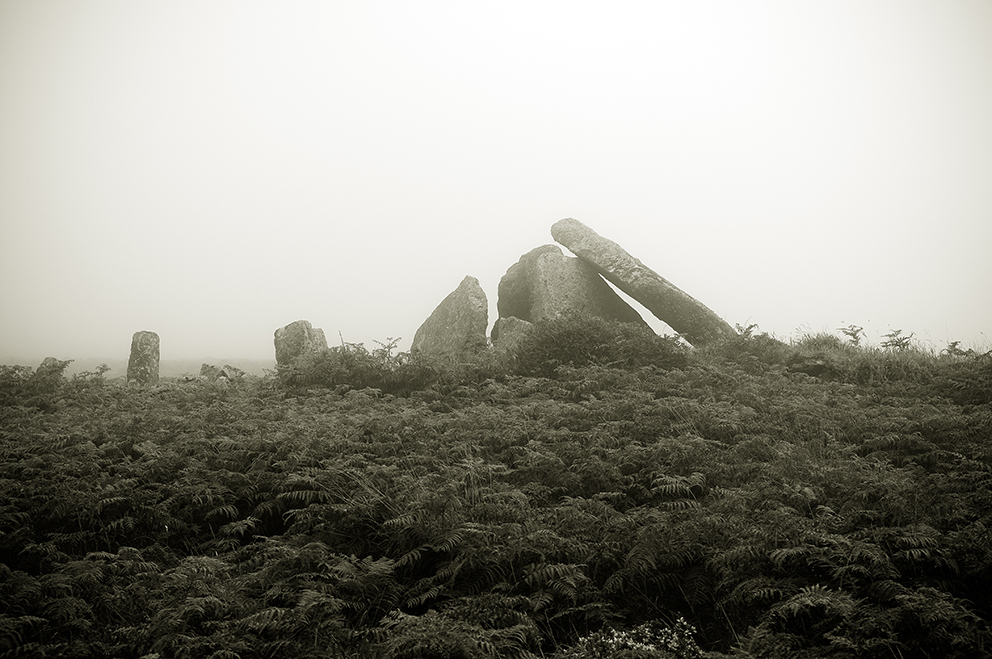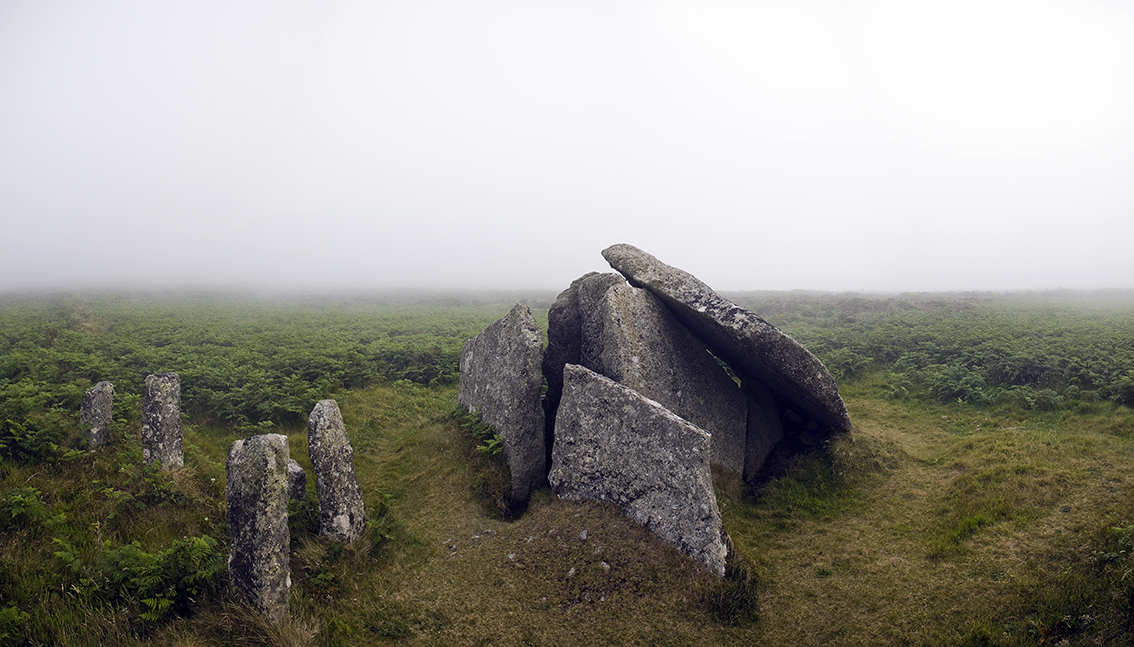


This really was a trial to find. It was, however, confounded by a really thick mist that had been hanging around the peninsular for two days (in late July!) and I think if I hadn't had an OS map I might never have found it. Starting from the car park at Zennor I crossed the main road near the telephone box and took the footpath that runs along the bottom of the hill and I remember wondering at the time whether there were any snakes around? We'd already seen a number of very small lizards on the cliff path to Gurnards Head when just in time I stopped myself from stepping on an Adder at the side of the path! Usually when I've encountered them in the past they've slithered off as soon as they know they've been spotted, but this one stood its ground and even allowed me to get relatively close to take its portrait! Having jumped over it I carried on along the path when, blow me, I encountered another which, thankfully, disappeared into the undergrowth. Passing the farm buildings I then started to make my way up the hill towards the Logan Stone but having reached the top, encountering yet another adder, I found myself completely disorientated because I couldn't work out where the sun was due to the mist and wandered around for about half an hour becoming increasingly panicky. Then, just as I was about to despair and make my way back down, there was a very brief break in the mist across the moorland and I could just about discern what must surely be Zennor Quoit about 300m away. Rechecking the map as the mist rolled relentlessly back in I made a mad dash to get there and felt a huge relief as it came into view just the other side of a low stone wall through the ferns and gorse. My first reaction on coming up close to it was its sheer size, it had looked quite insubstantial from a distance, but this really is a whopper and quite beautifully constructed. I didn't realise the significance of the five pillars alongside it at the time so I was quite intrigued by them and also the tiny holes which appear all over the structure. I think the combination of it being hidden in the swirling mist and having had to really struggle to find it gave it a special kind of significance for me and it presented itself as an award if you see what I mean. Well worth visiting but I would advise anyone attempting to find it in adverse weather conditions to have a map and a compass...... oh, and look out for snakes.
